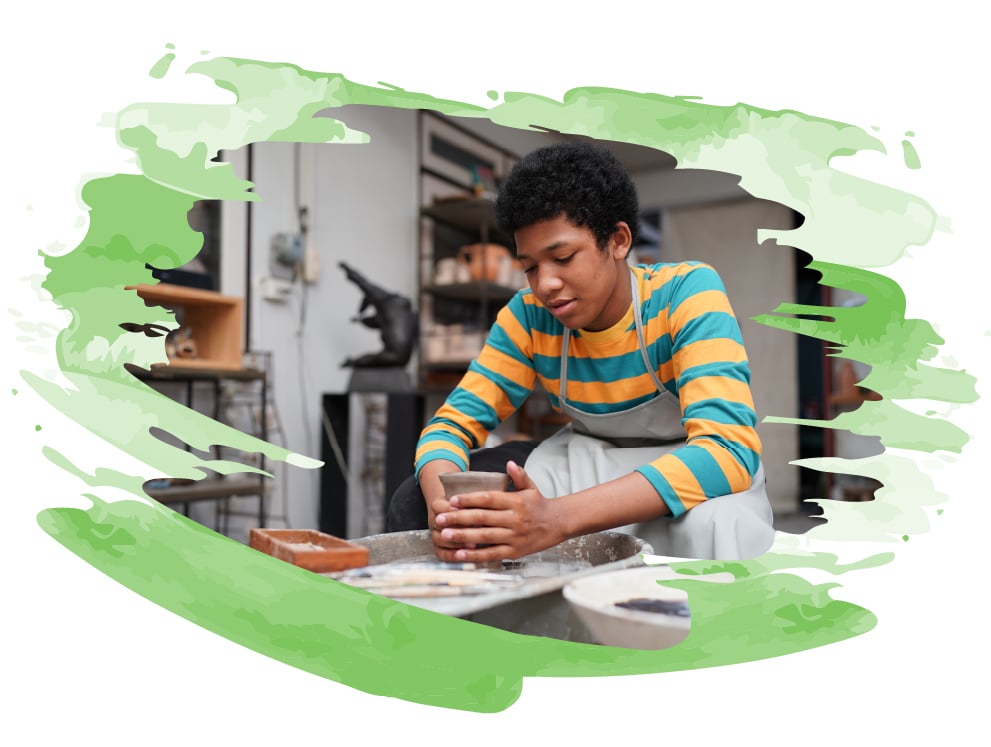Before engaging in a creative activity to support emotional resilience and regulation, you must understand your needs and identify the ideal outcome. You can consider your emotional goal, choose a creative tactic, decide on the emotional approach that works best for you, and then determine how this activity will help you process what you are facing.
Here is a four-step strategy to help set you on the path toward managing your emotions and mental health productively.
Step 1. Set your emotional goal.
When we’re in the middle of a situation that lowers our level of hope, we can begin by better understanding the mix of emotions that comes with our circumstances. Next, consider what emotional state might help you overcome this challenge.
Reflect on what you want to achieve emotionally by asking yourself:
- What emotions am I currently feeling? How intense are the emotions for me right now? What sensations do I feel in my body, and where are these located? How intense are these feelings in my body? Tip: Use the feelings wheel to help you clarify what emotions are coming up for you.
- What emotional state am I hoping to reach?
- Once I achieve this emotional goal, how do I expect my body to feel? Will I feel more at peace, energized, or less tense?
Step 2. Choose your creative outlet.
When you’re in the middle of a situation that lowers your level of hope, remember that you have options available to use creativity as a tool. This step works best if you reflect on which creative outlets have helped you in the past. If this is your first time trying a creative outlet, you may benefit from detailing how it works or did not work for your emotional goal.
Decide on the specific one (or more) artistic activity that matches your emotional goal by asking:
- What creative outlets are available to me at this moment or later today?
- Which of these options do I want to engage in?
- Which of these options can I realistically engage in based on my bandwidth of time, emotional energy, and access to resources?
Step 3. Identify your emotional strategy.
When we are in the middle of a situation that lowers our level of hope, we can choose from a few different strategies to raise our awareness of our goals, pathways, and ability to take action. We can choose strategies to cultivate hope, such as changing the situation, choosing where to focus our attention, changing the thoughts we have about the situation, or managing our emotional response to the situation directly.
Reflect on how this chosen activity can help you to process or regulate the emotions you are faced with.
- What emotional strategy do I hope to achieve at this time?
- What past experiences or emotions make this strategy feel most effective for my current situation?
- Why do I believe this is the best strategy right now?
Step 4. Evaluate the effectiveness of your strategy.
When we are in the middle of a situation that lowers our level of hope, we can try to determine what emotional process this creative outlet should generate for us.
- How will I know when my emotional strategy is working for me? What signs will I notice in my emotions, thoughts, or body that show this strategy is helping?
- How will I know when my emotional strategy is not working for me? What signs will I notice in my emotions, thoughts, or body that show this strategy is not helping?
- Tip: If your creative outlet isn’t helping, consider trying a different activity, taking a break, or adjusting your emotional goal.


